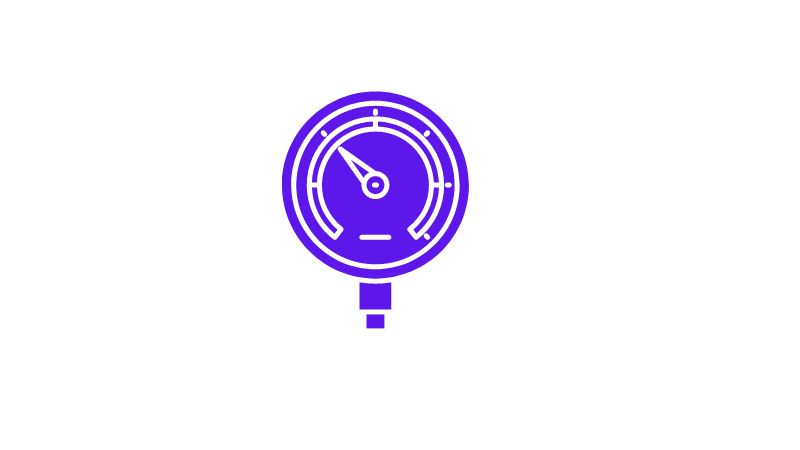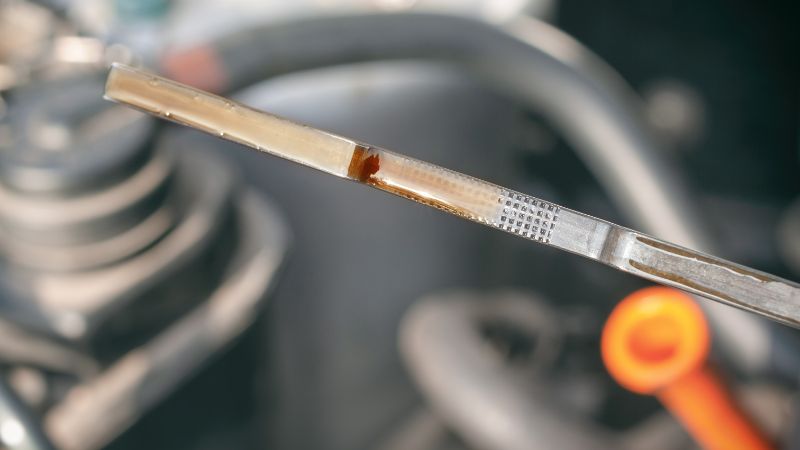You can check your car’s oil pressure without an oil pressure gauge. Generally, you might want to check your oil pressure without a gauge for many reasons. One is if your gauge isn’t working correctly. Another reason is if your car doesn’t have a dipstick.
Actually, with a simple process, you can check your oil pressure without a gauge. This guide will help you to check oil pressure without a gauge within a few minutes. Without it, we will discuss more important information here. So, don’t go anywhere; please, read on.

How to Check Oil Pressure Without A Gauge Step By Step:
Step 1: Learn How Oil Pressure Works
The oil pump generates oil pressure. When the engine runs, the oil pump sends oil to various machine parts to lubricate and cool them. You should measure the oil pressure with a gauge or dashboard light. Additionally, if the oil pressure is too low, it can damage the engine.
Step 2: Understand the Signs Of Warning
If your car’s standard oil pressure gauge is reading low, your vehicle has an oil pressure problem. Also, if the oil pressure light on your dashboard is flashing, you need to add more oil. This problem will be due to a low oil level, a faulty oil pump, or a blocked oil filter.
Step 3: Check Your Oil Level
If you experience low oil pressure, check your car’s oil level first. But if you notice your oil level is low, the oil pump needs to work harder, causing low oil pressure.
To check your car oil level, remove the dipstick and clean it. Insert the dipstick into the engine and pull again. Generally, notice the oil level between the two marks on your dipstick. If not, add more oil until the correct level is reached.
Step 4: Check the Oil Pressure Light
You also need to check the oil pressure light on the dashboard. To do this, begin your engine and let it idle for a few minutes. Then, to see if the light is on.
Furthermore, if the light is on, your car has an oil pressure problem. Nonetheless, it’s crucial to note the light may also come on if your oil pressure detection sensor has a problem.
Step 5: Listen for Any Warning Signs
If you still need to confirm your oil pressure problem, wait for some warning signs. For example, if you hear strange noises from the engine, your oil pressure is too low.
Additionally, if your car starts shaking or vibrating more than before, it’s a low oil pressure signal. Mainly, when you notice any warning signs, take immediate action and check your vehicle’s oil pressure.
Step 6: Carefully Drive Your Car
Still, if you are still determining if you have an oil change pressure problem, you should drive carefully until you check it. Avoid high-speed driving and take frequent breaks not to overheat the engine.
Step 7: Inspect Your Vehicle
You should check if your car’s oil pressure is problematic if you need clarification. If you take it to a mechanic, they will tell you to take action.

How To Use Homemade Oil Pressure Tester:
Checking oil pressure is part of a basic engine health test. Ensure your car’s oil pressure switch is topped with an oil pressure tester. The Oil Pressure Test Kit tool is straightforward.
- First, ensure the engine is cool enough to start, apply the handbrake, cut the wheels, and put the transmission in the park.
- Now discover the oil pressure or temperature sender on the engine block and often near the sump.
- Remove the switch; you should be prepared with an oil drip tray to catch oil. The Oil Pressure Test Kit includes a selection of adapters to suit various thread patterns.
- To find the matching one for your engine. And fix it to the block where the engine oil pressure center is discarded.
- Connect the oil tester to the adapter and check your oil level before starting your car.
- Consult your service manual to allow it to reach an operating temperature at what RPM test should be performed.
- Hold the engine at this rpm while you take the reading. A low reading indicates a worn oil pump-blocked oil filter that is too thin for the machine. A tall task may be due to a faulty pressure relief valve.
- Once you have taken the reading, stop the engine and let it cool before removing the oil pressure.
- The test gauge and oil pressure sensor must reinstall as oil top-up and work is complete.
How Do I Check Oil Pressure Manually?
Most new vehicles have an electronic sensor that monitors oil pressure. But knowing how to perform a manual check is still a good idea. This can be especially helpful if your automobile doesn’t have an electronic sensor.
- To check your oil pressure manually, ensure your engine is off and has had time to cool down. Find the dipstick on the engine block side. Check your owner’s manual if you need help finding where it is.
- After finding the dipstick, pull it out and clean it. Put the dipstick back in, then remove it again. Now check where the oil level has fallen on the stick.
- By two marks, you get the acceptable range. You will find two dots points on the dipstick, one indicates excess oil and another means low oil. So if you find the level falls, add or remove the oil according to the requirement.
What is The Best Oil Pressure Test Kit?
Too little oil means insufficient oil flow, which can increase heat and friction before eventual failure. Likewise, excessive oil pressure can also cause damage, with the oil unable to lubricate effectively. Nonetheless, there are many oil pressure kits on the market. Some oil pressure kits are:
- Draper 43054 Oil Pressure Test Kit
- Sealey VSE203 Oil Pressure Test Kit
- Clarke CHT712 Oil Pressure Test Kit
Related Questions:
Q. How to check oil pressure in a diesel engine?
- For better clearance, raise the front end of your vehicle if necessary.
- Locate the engine oil pressure sender on the engine block. Check your vehicle’s repair manual if you need help determining where it is.
- Put an oil drain pan under the engine to catch oil spills.
- From the oil pressure sender, remove the electrical connector.
- From your engine block, remove your oil pressure sender using the proper socket.
- Follow the assembly instructions on your oil pressure kit and prop the tester.
- Ensure you fill the oil level correctly and top off as necessary. Allow the engine to idle for five minutes.
- Using your vehicle’s owner’s manual, find out what RPM is necessary to check the oil pressure.
- Take proper engine oil pressure readings and write them down.
- Stop the engine and let it cool. Now, remove the oil pressure tester.
- And reinstall the oil pressure sender and electrical connector.
- Lower the car and drain the oil level to make sure the prosperity level.
Q. How to Check Oil Pressure With a Scan Tool?
With this simple taste, you can prevent significant engine damage. You can check your oil pressure in many ways, but a scan tool is one of the best.
Here’s a step-by-step guide:
1. Attach the scan tool to your car’s diagnostic port. Usually, it’s located near the steering column and under the dash.
2. Launch the scan tool and select “Oil Pressure” from the menu.
3. The scan tool will display your car’s oil pressure reading. Note this number and compare it to your car’s model.
4. If the reading is lower than average, it indicates a problem with your oil pump or another system.
Q. How To Check Oil Pressure Sensors?
There are a few ways you can check oil pressure sensors. But here, we will discuss how to check oil pressure sensors with a multimeter. To do it, you need only a few minutes; have a look:
- Remove the electrical connector
Press the button to close the lock. Pull the connector to eliminate it.
- Check resistance
When the engine is off, connect the meter to the terminal for the warning light on the sensor. In an appropriately functioning sensor, the reading is 0 ohms. Connect the lead to the terminal for the metal housing and sending unit. Typically, this should read as an open circuit.
- Check the terminal resistance with the car running.
Recheck the terminal resistance. If there is oil pressure, the switch terminal must read infinity, implying an open circuit. The sending unit reading should be in the 30 to 55-ohm range depending on the temperature, oil viscosity, and speed.
- Replace defective sensor
Turn off the vehicle. If the sensor doesn’t return to the correct settings, it isn’t very accurate, and you should replace it. Moreover, reconnect the connector if the sensor returns to the specified locations.
Q. How Much Does It Cost To Check Oil Pressure?
The average cost to replace an oil pressure sensor is between $132 and $150. Labor costs are estimated between $71 and $90, while parts cost between $60 and $60.
Final Word:
Accordingly, regularly checking oil pressure is very important in car maintenance. Finally, you can still check your oil pressure without a gauge, but you should do some work to do it. After reading this article, you know how to check oil pressure without a gauge.
With simple steps, you can adequately do it without any problem. Ultimately, we hope this article will be helpful to you. Here we are discussing ways of checking oil pressure and more important information. Overall, in this article, you can get what you want. Thank you for giving us your valuable time.
